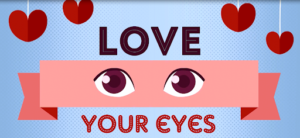I don’t know who was the first person to exclaim, “No pain – no gain” but must have been a runner. It’s not that weight lifting can’t be torturous; of course it can.
The thing is, the weights are all in the same room, so ending the workout because of injury or illness is less challenging than say, for the runner who became ill at kilometer 5 of a 10km run. One way or another, hurting or not, the runner has to get home.
Becoming a runner requires planning and persistence with a healthy dose of common sense thrown in. 
The challenges presented by steep terrain and bad weather can be daunting, yet not compared to the lasting effects of preventable eye damage.
Most new runners know to check their shoes for wear and tear before heading out, yet many will not wear sunglasses, running caps or sun block lotion, despite the dangers of cataracts and other eye diseases from sun damage.
Running can help with our mental and physical well being, and you need to be prepared for all conditions affecting every part of you from head to toe and everything in between in order to be fully protected from Mother Nature when she’s in one of her moods.
Vancouver based optometrist Dr. Jessica Chang has a passion for vision and eye health and the outdoors, which led to her volunteering as an optometrist for the 2010 Vancouver Olympic Winter Games.
She also joined Volunteer Optometric Services to Humanity (VOSH) to provide eye care in remote regions of Guatemala.
Today, Dr. Chang offers tips in a Q&A on the importance of proper eye hygiene to help maintain good eye health.
Q: How important is it to wear sunglasses?
A: UV protection is important, exposure over our lifetime can add up to eye health issues in our future such as cataracts and age-related macular degeneration.
Q: Can eye contact lenses cause dry eyes in summertime?
A: With air-conditioning or dry heat, contact lenses could dry out more quickly than usual. Wearing sunglasses to block wind while we’re outdoors being active can help.
Switching to daily disposables or using artificial tears with our contacts would also help.
Did you know that dry eye disease is a chronic and progressive condition, affecting about 30 percent of people? Symptoms include eye fatigue, soreness, grittiness, and sensitivity to light.
If left untreated, dry eye symptoms can lead to eye inflammation, abrasion of the eye’s surface, corneal ulcers, and poor vision.
Q: How do we clean/recycle contact lenses?
A: Plastic blister packs can be recycled and contact lenses should be thrown in the garbage rather than flushed down the toilet.
Q: Should we take eye breaks while reading outside?
A: Same rules apply outdoors as indoors. Practice the 20/20/20 rule which is to look 20 feet away for 20 seconds after 20 minutes of near work.
Other tips:
Proper lighting (is important). Make sure your room is lit properly and eliminate all glare from external sources such as the windows.
Blink! We usually blink about 15 times a minute. When we stare at the computer, we blink about 3 times a minute.
Monitor placement. Make sure your computer is 15-20 degrees below eye level and the computer is approximately 40-75 cm away.
(Get) regular eye exams. Your doctor will check for any uncorrected prescription and muscle alignment to make sure your eyes are working optimally. Also, you could consider visiting a laser eye surgeon if you develop any eye conditions, to see if they can correct the problem and improve your vision. There are a lot of eye conditions that can be treated with laser surgery, and if you’re interested in learning more, check it out here.
Lens Technology. Blue light coating, HD lenses and new media lenses help reduce eye strain.
Thanks to Christine Blanchette for our weekly Fitness Friday Features and be sure to follow her on Twitter as well as her Youtube Channel.
Stay Safe








